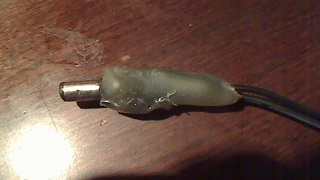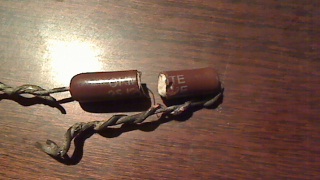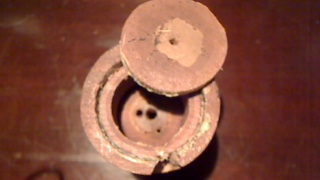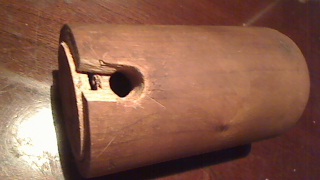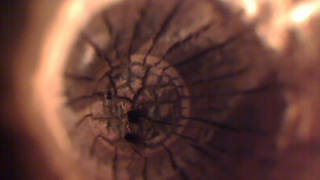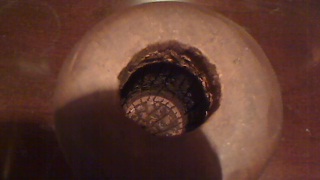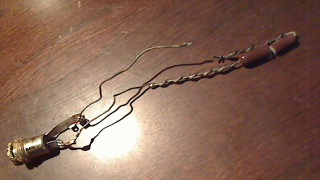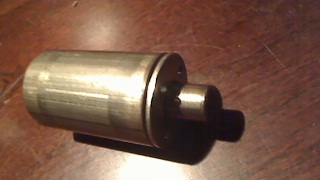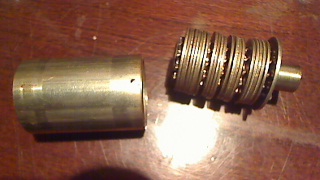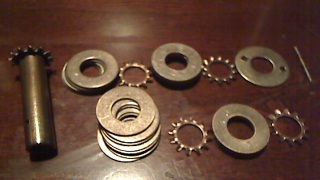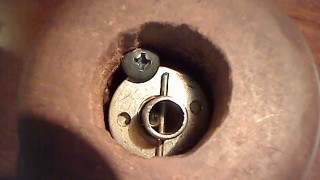Hello! It has been ages since I've been here!
My PD just died recently, too.
I had long been taking care of the power supply issues [the solder connections tend to break near where it plugs into the PD] so I open it up and solder it back on properly and then create my own temporary strain relief using hot gun glue [and using electrical tape to protect the wire from being corroded green by the glue]. Ghetto, but it works without having to buy a new power supply.
My PD has been slowly getting looser, and looser, and LOOSER and LOOSER, rattling around inside as the hole gets bigger due to the charring. I had tried to insert cardboard pieces to prevent the rattling but it overinsulated it, making it run too hot [which combusted my herbs] so I removed the cardboard and lived with the the looseness.
I started running into the PD being completely cold unexpectedly and repeatedly in the last few days, and after checking my two powersupplies carefully and verifying they were not the cause, I tried to open my PD to investigate to find out what may be happening inside.
The PD can be opened from the top, but I presume that age made the top circle become smaller than the PD unit itself, so I had to scrape the wood along the inner sides to be able to slide it out [so if preserving the way it looks on top is important to you, skip this step or find a very gentle way to widen the hole]. Use snap-ring pliers [buy some if you need to] to remove the snap ring on top and slide the PD unit out, being very careful to look at the resistor inside the tube to make sure its not also being tugged outwards as you remove it.
The reason why I say this is because when I removed my unit, I found the resistor broken in half. Was it already starting to break and causing my problems, or did my removal break it? I'm not sure-- I can't clearly tell what would have pulled on the resistor enough to break it. It is an OHMITE 25J20RE - 20 ohms of resistance at 5 watts. If you wish to buy some, here is where to get them;
http://www.alliedelec.com/search/productdetail.aspx?SKU=70023233
If you wish to open it from the bottom, after you remove the felt bottom, the wood piece you find is glued very securely-- a little too securely. There is flat cylindrical piece of wood and takes quite a bit of hacking to remove this piece [I used a thin screwdriver and hammer and went around the circle, be careful it is extra thin because anything thicker will cause cracks]. It wasn't until I accidentally broke off the wood below the part where you plug into the PD that I had the opportunity to use a small flat screwdriver to separate this piece from the unit [In the second picture you can see where I got the leverage to pry it off]. So from the pictures below you'll have an idea of the work ahead of you if you wish to do this without damaging the externals of the PD.
So, how does the PD look inside with the mechanism removed? How charred did mine look? Here it is, and you can also see the hacking I did [not a careful job obviously] to make the hole bigger to remove the unit.
The resistor stands upright through the hole in the wood you see in the middle, and then through the tube on the unit. It is not attached to the tube in the unit, so the unit is supposed to be able to slide right upwards without damaging the resistor.
So, what of the unit, resistor and everything? The unit has a metal cylinder on the outside that is not permanently attached, and the pictures also show it disassembled to show how it works;
As you can see in the resistor picture, the wire broke off on one part-- this may have been my problem-- as it was moving around a lot it may have slowly strained the wire until it was getting to the point where it was about to break [or was broken and was intermittently contacting/not contacting].
The unit is so very simple. Washers as heat sinks, the tube, those fins as separators to increase surface area, and the cross bar to allow the stem to be in the perfect position and also to tightly lock the entire assembly together. I couldn't remove the last fin from the tube because my tube was a little flattened on that end making it difficult to slide it off, so I left it there.
So how do I plan to fix my PD?
I don't want to add anything toxic. Adding more wood to stabilize it and prevent the unit from moving around so much would probably lead to it drying out and failing just the same.
So, what I plan to do is to use small screws and screw them into 8 spots on the interior of the wooden PD, to cover the two axes (X and Y) on the bottom and on the top, then slide the external cylinder in to see how well it fits, adjusting the screws as necessary to improve on a tight fit before putting the unit in and closing everything up. The screws won't wear out due to the heat, and I presume that the wood inside has charred long enough in the few years I've had the unit where it won't deteriorate and make the screws fall out.
We'll see. I haven't gotten to this part yet-- the resistors are on their way [got several in case I break another or have to repair this again in the future, they're cheap anyways] and have to arrive first.
As for my opinion on Tom and Pammy?
They never hid what their situation was and who they were-- a mom and pop type of business. I knew what I was getting into when I bought this unit, and I certainly don't expect them to pull money out of their hat to fix my unit. They certainly didn't seem to be in the business for outrageous profit either-- I felt their price was always fair.
Their customer service was STELLAR the whole time I was with them. So, I feel zero bitterness about this issue and wish them both the best.
Let me know if any of you want other pictures or questions answered.
HoneyAir

